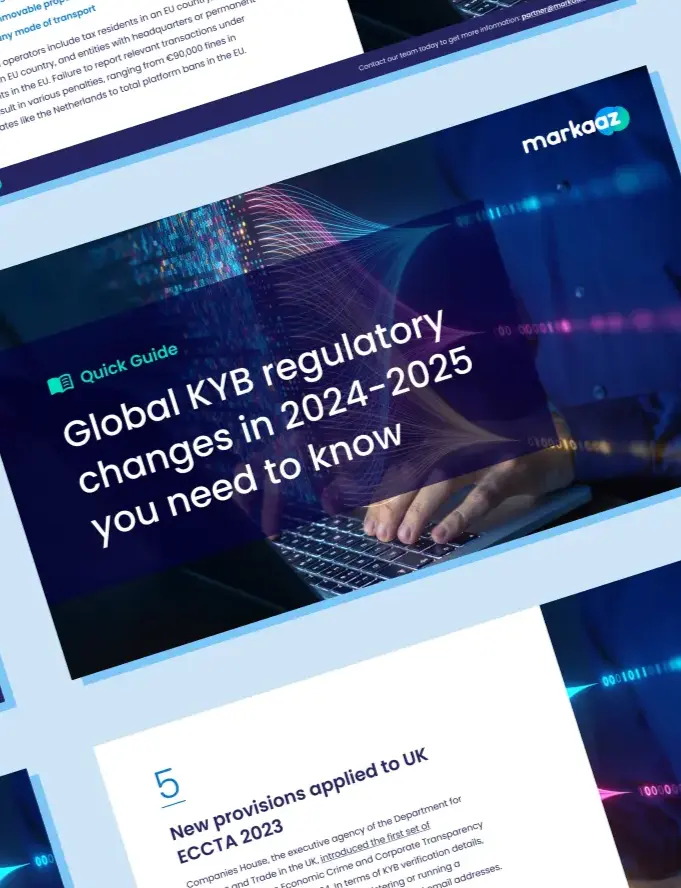Have you ever heard that it costs up to 25 times more to bring in a new customer than to keep an existing one?
It’s a pretty crazy figure, but that doesn’t make it any less accurate. Even when you push numbers to the side, anyone with a small business knows how important customer loyalty is. These customers write great reviews, try new products, and share your products with others.
Keeping small business customers can be a challenge, especially in some industries. For instance, one study about apps shows that only one in four users open an app more than a single time.
Knowing that, you might wonder what it takes to keep small business customers coming back. The answer starts with the customer onboarding process. This article will delve into the process to onboard users and keep them as customers for the near future, something that is sure to lead your enterprise to success.
What is customer onboarding?
Small business customer onboarding is the process of bringing in your target new users and setting them up for success using your service or product. This stage of customer experience lets the users learn how to use your products, how the product fits into their lives, and what value the product offers them.
Depending on the industry, your small business customer onboarding process may be different from the next business. However, this guide will focus on those who work with credit and may have small business customers who purchase small to very large product subscriptions.
When does onboarding begin?
There’s some debate over the answer to this question. Many people say that onboarding begins the first time you ever talk to someone who might be a customer in the future. Others will assert that onboarding only begins when someone signs up for a service product. In either case, things get rolling after a small business customer provides you with their information.
Whether you consider onboarding to start when someone sends your brand a chat or when they start to pay for a service, it’s an important moment for both the customer and the company. We would like to take the middle argument in this case. Onboarding starts when someone makes an account, as they are showing interest in being a customer.
Reasons onboarding is important
Onboarding is the moment that sets the stage for the rest of the small business’s interactions with your company. Onboarding is the opportunity for companies to create a positive first impression of their business to the customer. It is also the best chance to communicate the values and benefits associated with the product or service. By taking the time to provide small business customers with the information they need to make an informed decision, it can lead to long-term customer loyalty and satisfaction.
Onboarding is also the best time to set proper expectations and ensure that customers have a good understanding of what they are getting out of the product or service they are signing up for. This effort can also help to reduce customer turnover since customers are more likely to stay with a company if they have a positive first impression.
Even before someone signs up with your company, they often have heard of you from users, seen your website, and read some reviews of your offerings. When they come to you, that’s the time to show them they made the right decision.
One of the most important parts of onboarding is indicating that you can solve a problem for the user. This is the time to show that you can make life easier and add value to someone’s everyday life.
However, onboarding is also a time for you to learn more about your customers and who they are. You might be providing educational information, but so should the small business customer. The more you know about the customer, the better equipped you will be to meet their needs.
Since that is the case, many companies benefit from sending out a market research survey either during or directly after the onboarding process.
What do small business owners need during onboarding?
The purpose of customer onboarding is to bring someone on to use your products. The series of steps in onboarding can vary but will often include account activation, welcome emails, video tutorials, product introductions, and customer service options.
Teaching your small business customer how to start is an important part of onboarding. However, there are also things you may need from the customer yourself. For those who offer credit to customers, whether individuals or businesses, several pieces of information should be supplied to you during onboarding.
Credit scores
The time you spend with new customers will depend on what they plan to order and how important they are to your business. This factors into how much credit bureau information you acquire, what financial disclosures are needed, and whether a background investigation is needed.
There are three classification levels for customers that should be considered in onboarding. These include the following:
- Small limits: A decent credit score and application will be enough in this case. Asking for credit card-based payment can also be used instead of having open terms for those with small accounts. The credit card fee is small and can avoid collection issues in the future.
- Medium limits: References checks and a standard report are useful for people with a medium limit at your business. Look at whether they tend to pay bills on time. If not, consider whether you want to put other contingencies in place, such as smaller order sizes or upfront partial payments.
- Large limits: A financial statement analysis and thorough credit examination are important for customers who make huge offers. The key things to look at are debt burden and liquidity. A credit bureau report and checking supplier references through an application are a good start.
As you go through this information in onboarding, consider whether the credit is on the low or high end in comparison to the company’s risk tolerance.
Business data
It’s also important to look at business data when onboarding a client for credit. Business information encompasses several factors about the customer as a business. It includes things like the company name, address, and identifiers (such as EIN and business license number). Business data also includes the type of entity, contract information, owners’ names and percentage ownership, and other affiliated companies.
When you onboard someone for credit, it’s best to have them fill out an application through your digital system. This lets you learn all the information you need about a customer before you move forward to making a decision. This application is often the first step of onboarding and will include all the business information you need.
Documentation
The third important piece of information needed for onboarding when credit is involved is documentation. This is proof that all the things being provided to you in the application are true. The actual documents you need will vary based on your company, industry, and what products or services you offer.
However, several things are common to include. Estimated initial order amounts, estimated annual purchases, several trade references, and banking relationships are crucial to get information about. An attorney can review all of the documentation provided before you decide and take someone on as a customer.
Documentation, business credit scores, risk scores, firmographic data, as well as compliance and risk scores are available for your business in the Markaaz onboarding API, which uses the Markaaz Directory of over 300 million global businesses, 98% of which are small businesses to provide accurate onboarding data to your team.
With the custom integrations available that link into the Markaaz Dashboard, the small businesses you are working with can enable consent-based document sharing from the Markaaz Vault, meaning your enterprise has all of the data it needs to successfully onboard your small business clients.
Contact our team now to learn more about our onboarding APIs.
CTA
Final thoughts
The customer onboarding process is one of the most essential parts of the customer journey. The main goal is to ensure new users are set up to use the product or service, which may include moving data from one form of software to another where customers learn to use the item they have chosen to purchase. There are many types of information involved in onboarding, and it’s important to keep these things safe and secure.
Customer onboarding is crucial because it helps reduce the number of customers who stop using your service or product. Remember that a great onboarding process is the first step to creating a successful customer experience. Be sure the process is uncomplicated, streamlined, and capable of addressing all the needs of your customers.



